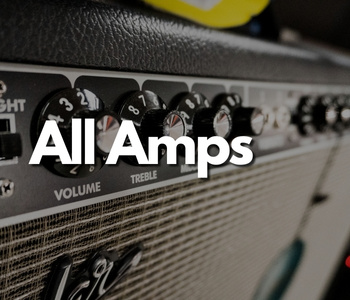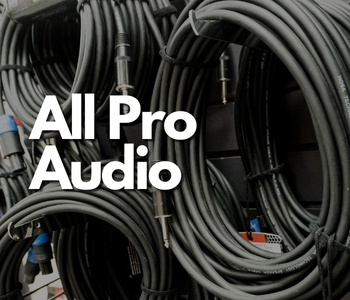Renting or Renting To Own A Clarinet? Here Are Some Accessories You Will Need.
So you decided to play the clarinet. After you have made the purchase or went with a clarinet rental or rent to own program you will need a few things to get started. The clarinet is a beautiful instrument. It was invented long ago in the 17th century and has evolved greatly. It is a single-reed woodwind instrument shaped in a straight cylindrical shape. The standard clarinet plays in a B♭ range and has seventeen working keys. In addition, many clarinet accessories are available to help improve the sound and assist in the maintenance. This article is going to share everything for you to shop clarinet.
Clarinet Accessories:
● Clarinet Reeds
● Chromatic Tuner
● Cleaning Supplies
● Music Stand
● Method Book/Sheet Music
● Mouthpiece case
● Neck strap
● Clarinet case
● Cork grease
Clarinet Reeds
Clarinet reeds are an essential accessory to play clarinet. A clarinet reed is a thin, small piece of wood. It rests flat against the mouthpiece and can be tightened with two small screws. Reeds come in different strengths. The strength is related to the thickness of the wood and is displayed in the form of a number on the outside of the clarinet reed box. A clarinet reed is an integral part of playing the instrument. It works by vibrating when the clarinetist blows air over the reed. The vibrating reed then forces the air through the clarinet, thus making music. The quality, thickness, strength, and age of the clarinet reed all affect the instrument's sound.
How to take care of clarinet reeds?
● Ensure a clean mouth before using the reed. For example, if you just ate lunch, rinse or brush your teeth before playing.
● Use a reed case. A reed case will help to keep the moistened reed flat when it’s not in use.
● Rotate through your reeds. This allows for even wear and breaks the reed in better.
● Practice patience. It can take some time to learn how to care for clarinet reeds. C
Clarinet Tuning
It's imperative to have your instrument in tune for it to sound its best. Therefore, a chromatic tuner is a clarinet accessory that is a must. It helps detect pitch and determine if the sound is too flat or sharp. However, clarinet tuning can be intricate and requires patience and persistence. How to tune a clarinet? ● Warm up first
● Use a chromatic tuner. This will tell you if your sound is sharp or flat.
● Adjust embouchure to change sound and pitch.
● Check more than one note to ensure that the whole instrument gets tuned and not just one note.
● Usually, clarinets are tuned on middle C, open G, B flat, and high G
● If, after adjusting your embouchure, the sound is still sharp, pull the barrel out; if it's flat, push it in.
● Practice a chromatic scale to ensure the clarinet is fully tuned. Clarinet Cleaning Supplies Cleaning your clarinet ensures that it's playing at its best. It helps the keys to staying fluid and removes dirt, grime, and excess bacteria that might be building up on the inside. The shape of the clarinet makes it a prime location for germs to get caught inside, and regular cleaning reduces this.
What cleaning supplies do I need?
● Warm water
● Small mouthpiece brush
● Dish soap
● Cleaning swab
Cleaning a clarinet and keeping it clean isn't hard at all. Keeping the mouthpiece clean and dry can be done with a lint-free cloth, warm water, gentle dish soap, and a small brush to reach inside. The remainder of the instrument should not ever be immersed in water but instead, run a cleaning swab through from the top through the barrel to pick up any excess moisture after every use. For older clarinets, pad saver paper helps remove dirt from building up on the pads. This will prevent sticky keys down the road.
Music Stand
A music stand is helpful to be able to play the instrument and maintain proper posture. A good music stand will be able to adjust to a specified height and adjust with an angle. A music stand will make practicing and playing far more comfortable.
Method Book/Sheet Music
One of the most critical clarinet accessories would be the sheet music or method book music you're using. There are many options available, and it's most important to be using the adequate level. If you are signing up for private lessons, best to consult with the teacher which method book they recommend.
Mouthpiece Case
A clarinet mouthpiece case is a good investment to protect the clarinet mouthpiece. It can improve the longevity of your mouthpiece and prevent damage. A mouthpiece case is something you put the clarinet's mouthpiece in when storing it. It helps lint and dust stay out while packed away in the instrument case.
Clarinet Neck Strap
A clarinet neck strap is not always necessary, but you might find it beneficial if you're frequently playing. Its job is to support some of the weight of the clarinet, making it lighter and more supportive for you. Typically, a clarinet neck strap hooks the instrument halfway down and loops over the clarinetist's head to rest around their neck.
Clarinet Case
Though I'm sure this one goes without saying, we’re going to point it out anyway. A clarinet case is very important. It is an integral part of playing. It protects the instrument and makes it possible to safely transport it from home to school. You can choose between a soft case, which is soft-sided, lightweight, and very compact, or a hard case, which is bulkier but offers the instrument the most protection. If the instrument is going back and forth from school to home, a hard case is recommended for the safety of the instrument.
Clarinet Ligature
A clarinet ligature is a component that fastens the reed onto the mouthpiece. It’s important to have a proper fitting ligature. The reed must be fastened tightly while allowing it to vibrate. A proper fitting ligature is important in creating the best possible sound. Clarinetists will loosen or tighten the ligature to adjust the reed.
Cork Grease
Cork grease is a needed to help keep the joints moist and supports the assembly and disassembly of the instrument. Cork grease can be applied every time the cork is dry until it softens. Afterward, 1-2 times per week is likely all that is necessary. Sometimes it is necessary to wipe the joints clean of excess cork grease. Cork grease comes in a small tube similar to a chapstick. It can usually safely be stored in the case of the instrument.
Finally - The clarinet is a beautiful instrument. It has a beautiful, harmonious sound and is relatively easy to maintain and clean. These accessories will ensure that your clarinet always sounds and works its best!
A few last tips:
● Always wash and dry your hands completely before handling your clarinet. This easy step helps the instrument stay clean longer avoid clarinet repair
● Ensure you’re playing with a clean mouth.
● Keep 3-4 reeds on hand with at least two softened and ready to play.
● Store clarinet reeds in a good reed case to support the reed and keep it flat.
● Dry the clarinet mouthpiece with a lint-free towel before packing the clarinet away.
● Run a cloth through the clarinet after each use to absorb the moisture generated when playing.
● Be gentle with the ligature. Don’t overtighten the screws.
● Don’t skip the cork grease. Though it may seem quite minor, it’s not. It is crucial in keeping the assembly easy and smooth.
● Don't store your music/music books in the clarinet case. Though it may seem easy, it's not suitable for the instrument. The clarinet case is specifically designed for the instrument and provides excellent protection. Forcing something into that increases the risk of clarinet repair in the future.









